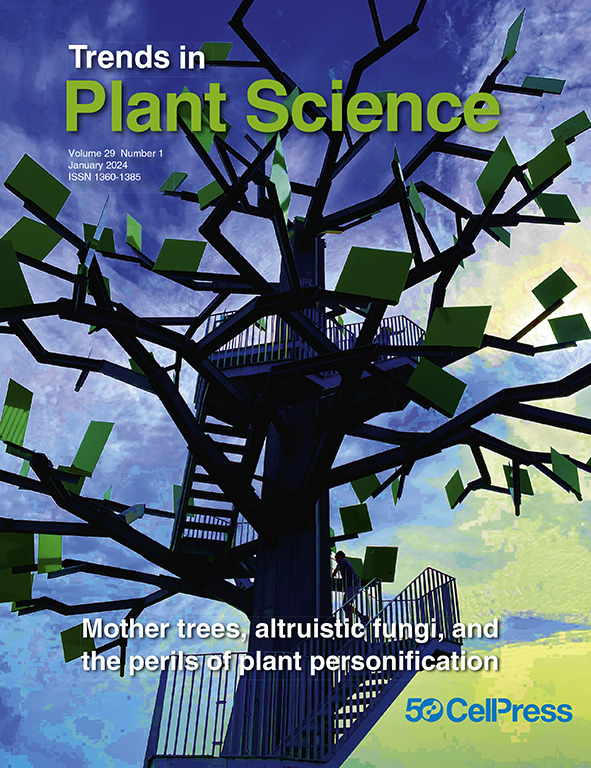茄科植物皮刺脱落的遗传基础。
IF 17.3
1区 生物学
Q1 PLANT SCIENCES
引用次数: 0
摘要
在最近的一项研究中,Satterlee 等人发现,茄科植物中反复出现的无刺品种是细胞分裂素激活酶 LONELY GUY(LOG)功能缺失导致的趋同性状。利用基因编辑技术可以在野生和驯化形式中创造出新的无刺形式。本文章由计算机程序翻译,如有差异,请以英文原文为准。
The genetic basis of prickle loss in the Solanaceae.
In a recent study, Satterlee et al. found that the repeated emergence of prickleless varieties in Solanaceae species is a convergent trait caused by loss of function in the cytokinin-activating enzyme LONELY GUY (LOG). New prickleless forms can be created in wild and domesticated forms using gene editing.
求助全文
通过发布文献求助,成功后即可免费获取论文全文。
去求助
来源期刊

Trends in Plant Science
生物-植物科学
CiteScore
31.30
自引率
2.00%
发文量
196
审稿时长
6-12 weeks
期刊介绍:
Trends in Plant Science is the primary monthly review journal in plant science, encompassing a wide range from molecular biology to ecology. It offers concise and accessible reviews and opinions on fundamental plant science topics, providing quick insights into current thinking and developments in plant biology. Geared towards researchers, students, and teachers, the articles are authoritative, authored by both established leaders in the field and emerging talents.
 求助内容:
求助内容: 应助结果提醒方式:
应助结果提醒方式:


